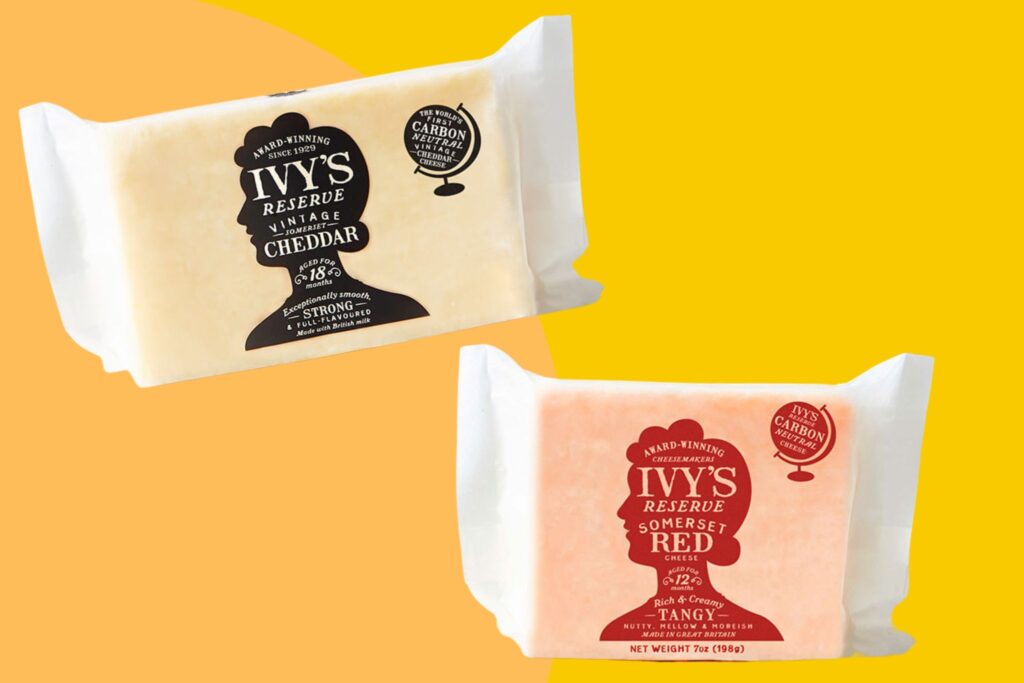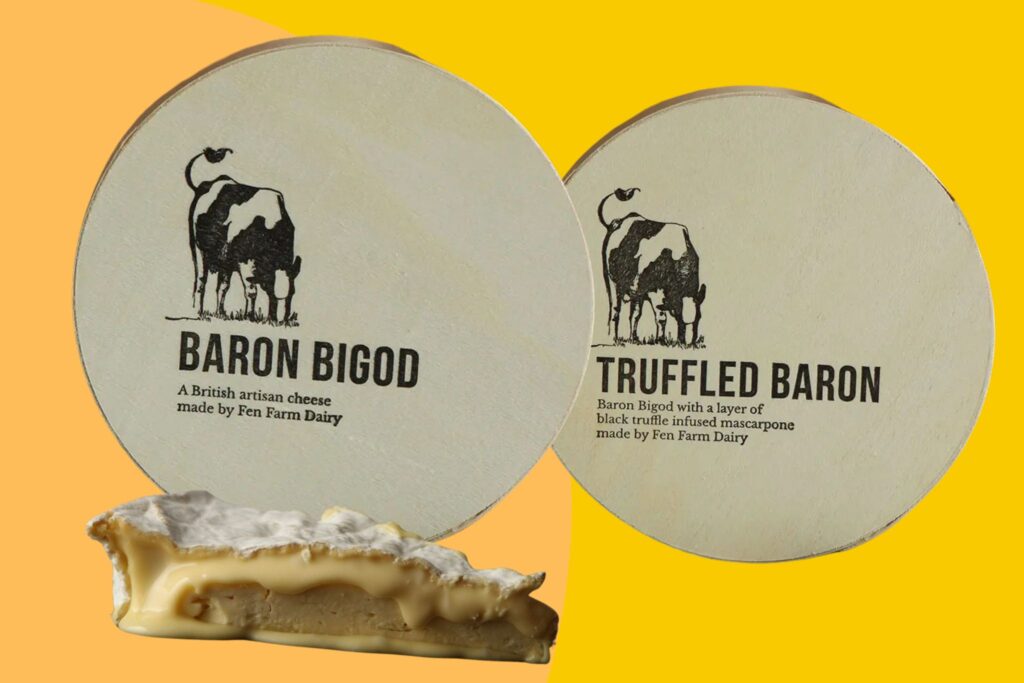While France and Italy might dominate continental cheese-making conversations, Britain’s dairy heritage stands proudly alongside Europe’s finest. In fact, at the 2023 World Cheese Awards, the UK landed two cheeses in the top 16, with another three awarded ‘Super Gold’ status.
We don’t speak of the 2024 awards – the UK’s best cheeses were conspicuous in their absence after getting stuck in customs. We can, however, speak with a quiet confidence about the quality of the country’s cheese this year, having eaten a hell of a lot of the stuff (we played no part in the customs seizing of the cheese, honestly).
From the rolling hills of Somerset to the rugged Yorkshire dales, these isles produce some of the world’s most exceptional cheeses. As winter draws in and festive preparations begin, there’s no better time to celebrate this rich tradition with a carefully curated Christmas cheeseboard that champions the best of British. Here’s how to curate yours…
A Traditional Cheddar
At the heart of any self-respecting, gently patriotic British cheeseboard sits a proper cheddar – all pert, taut assertiveness and salty crunch – and Ivy’s Reserve Vintage Cheddar represents everything remarkable about traditional British cheese-making.
This genuine Somerset treasure, matured for 18 months under wood, delivers an unmatched depth of flavour: complex and slightly sweet at first, developing into rich, nutty notes with that coveted crystalline crunch that the true cheese-heads seek out with a vision bordering on myopic. It’s also the world’s first carbon neutral cheddar – as if you needed any more excuses to get some in!

For a touch of contrast (and to satisfy Aunt Mavis’ fear of anything remotely pungent on the board), the same producer’s Somerset Red offers a younger, more easy-going profile that sits beautifully alongside that Reserve Vintage. Don’t mistake its approachability for simplicity though – this cheese brings a beautiful buttery smoothness and creamy tanginess that makes it incredibly versatile. And for those with one eye already on the 26th, its exceptional meltability transforms boxing day leftovers into sublime comfort food, particularly in a decadent mac and cheese.
A Touch Of Blue
No discussion of British cheese can ignore Stilton, and Colston Bassett’s iteration stands as perhaps the finest example of this protected cheese. Made in Nottinghamshire using traditional methods that span generations, this king of British blue cheeses offers a fascinating flavour journey that even has the French reluctantly conceding it’s quite nice.

Its initial sharp, salty tang gives way to a complex, almost sweet finish that lingers pleasantly. The paste should be butter-yellow with even blue-green veining throughout – a sign of perfect maturation. At room temperature, it develops an almost fudgy texture that spreads beautifully on crusty bread or those now soggy crackers you only bring out at Christmas.
Something Soft & Creamy
While French Brie is a go-to for good reason, Britain’s Baron Bigod from Suffolk’s Fen Farm Dairy has been turning heads in the cheese (and restaurant) world for some time now. This raw milk cheese, made from the milk of Montbeliarde cows, represents British cheese-making at its most innovative. The texture should be silky-smooth, with a bloomy white rind protecting the cream-coloured paste within. Expect mushroomy, earthy notes balanced by a delicate buttermilk sweetness. When perfectly ripe, it develops a gorgeous flowing texture that cheese lovers have, erm, wet dreams about.

Their truffled cheese, with a layer of their own milk mascarpone, infused with the finest black truffles, is one of the bestselling cheeses. With enduring notes of warm earth, barnyard, and mushrooms, its truffle flavour is delicate enough not to overpower the wider cheeseboard.
An Artisanal Surprise & Table Talking Point
Yorkshire Pecorino might raise eyebrows among purists, but Mario Olianas’s creation proves that innovation and tradition can coexist beautifully. Made in Adel, Leeds, using traditional Italian methods but with Yorkshire sheep’s milk, this cheese brings together the best of both worlds. The result is a hard cheese with a distinctive sharp, slightly salty profile and a subtle sweetness from the rich Yorkshire milk. Its firm, slightly crumbly texture provides a wonderful contrast to the softer cheeses on the board.

Perfect Pairings & Accompaniments
What kind of sick fuck is just eating slices of the good stuff unadorned? We all know that the right accompaniments elevate a good cheeseboard to a great one. A house-made quince, orange and chestnut chutney brings warming winter spices and the requisite festive fruit notes that complement the stronger cheeses beautifully. The quince provides body and sweetness, while orange adds brightness and chestnuts bring an earthy, festive dimension.
Don’t stop there; it’s Christmas, after all. For us, a good cheddar is brought to indulgent life with a bed of quality butter under it; the guys at Ivy’s Reserve know this too, and sell some truly gorgeous butter alongside their cheeses. Made from whey cream, which is created as part of the cheesemaking process, it’s all you need atop your cracker to really set the cheddar off. Call us crazy, but we think the traditional, nostalgic Hovis wheatgerm digestives are just perfect for this combo.


For a lighter option (you could – should – of course have both), a Bramley apple, cranberry and rosewater jelly offers a delicate balance of sharp and sweet, with the rosewater adding an unexpected but welcome floral note that pairs particularly well with the softer cheeses.
Of course, we don’t all have time to make our own chutneys. For the soft cheese on our board, we’re fans of The Fine Cheese Co’s Fig Chutney for Cheese – it’s sweet and sour, with warming Christmas spices.
Paxton and Whitfield’s spiced apricot and cranberry chutney, slow-cooked with onions, garlic and ginger, pairs particularly well with stilton. For that cheddar, the same company’s No. 93 Ale Chutney is a rich and tangy number made with Bramley apples, plums and real English ale – a truly best of British chutney, if ever there was one.
The choice of crackers deserves careful consideration too. Peter’s Yard sourdough crackers provide a robust, crisp base that stands up to stronger cheeses while adding their own subtle flavour – we’re particularly fond of their rosemary and sea salt ones. Whilst a little ubiquitous this year, their quality is undeniable. Don’t stop there; Miller’s Damsel charcoal wafers not only look striking on the board but offer a delicate, mineral note that complements the cheese without overwhelming it.
A scattering of Yorkshire walnuts (excellent with the blue cheese), some Dorset heather honey (particularly good with the Baron Bigod), and perhaps some grapes and/or dried fruit complete the board, adding both visual appeal and textural contrast.
Drinks To Match
Drinks pairings can transform the cheese experience entirely. English sparkling wine, particularly Nyetimber’s Classic Cuvée, works brilliantly across the board. Its fine bubbles and crisp acidity cut through the richness of the cheese, while its subtle toast and apple notes complement without overwhelming.
For something stronger, Chase Oak-Aged Sloe Gin provides a seasonal touch – its sweet-tart profile and subtle oak influence work particularly well with the stronger cheeses. Meanwhile, a good English pale ale like Timothy Taylor’s Landlord, with its complex citrus backbone and clean, hoppy finish, creates magic when paired with the vintage cheddar.

Speaking of which, the cheddar’s sharper notes and firm texture marry splendidly with Somerset Pomona, a fortified wine akin to port but made with apple juice and cider brandy. The sweetness of the Pomona balances the savoury depth of a mature cheddar, creating a delightful contrast.
For more ideas check out our article on pairing the best of British cheese with the best of British wine. For non-alcoholic options, a no-ABV Somerset cider or a craft apple juice provides both refreshment and regional authenticity.
Serving Tips
Temperature is crucial when serving cheese. Remove the selection from the fridge at least an hour before serving to allow the flavours and textures to develop fully. Arrange the cheeses from mildest to strongest, moving clockwise around the board, to help guests navigate the flavour journey.
Present each cheese with separate knives to prevent mixing of flavours, and consider labelling each variety with small cards that include tasting notes – guests will appreciate the guidance, and it adds a professional touch to the presentation.
This carefully considered selection showcases the finest of British cheese-making tradition while offering something for every palate. From the complex, award-winning cheddars to the creamy Baron Bigod, each cheese brings its own character to create a truly memorable Christmas cheeseboard that celebrates Britain’s rich dairy heritage.
Next, let’s serve up some Christmas cocktails to keep the party going. Cheers!





